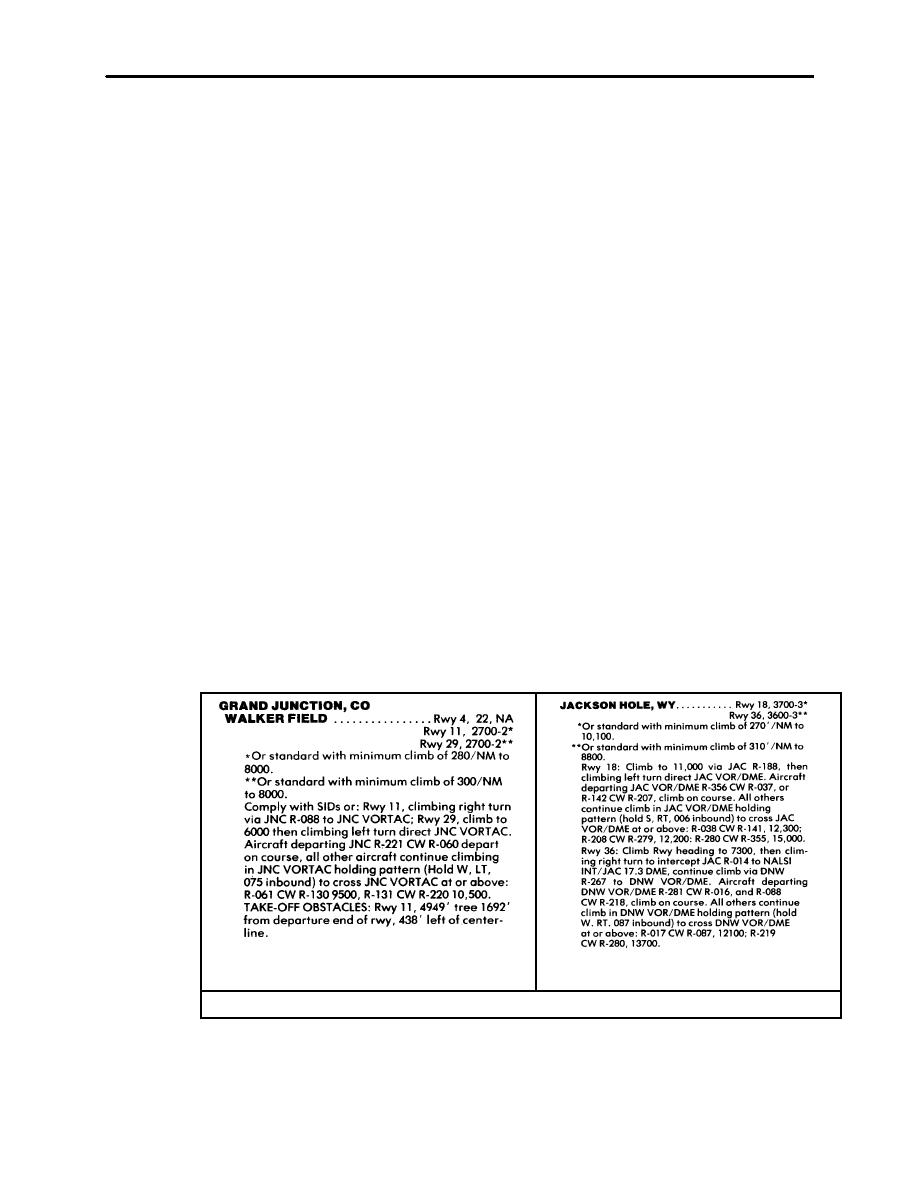 |
|||
|
|
|||
|
Page Title:
Figure 402-1. IFR Departure Procedures. |
|
||
| ||||||||||
|
|  `
JOINT ADVANCED MULTI-ENGINE T-44A
separate listing in the front of the approach book must be consulted.
NOTE: The non-standard weather minimums and minimum climb gradients found in the front of the approach book
also apply to SIDs/DPs and radar vector departures unless different minimums are specified on the SID.
Designing an IFR Departure Procedure. When designing an IFR departure procedure, the four most
commonly used methods by the TERPs specialist are listed below. Don't forget; in some cases, an IFR
departure may not be authorized (see figure 402-1).
Non-Standard Takeoff Weather Minimums. When obstacles penetrate the 40:1 OIS, non-standard
takeoff weather minimums are normally provided for some civil pilots to "see-and-avoid"
obstacles during departure. "See-and-avoid" is a type of "home field advantage" for pilots who
are familiar with the airport's obstacle environment and who are flying light aircraft usually not
capable of meeting the minimum climb gradient. The non-standard takeoff weather minimums do
not apply to USN aircraft (OPNAV 3710.7 establishes weather minimums). It is not advisable to
use any departure procedure using these non-standard takeoff weather minimums to "see-and-
avoid" obstacles. In fact, USAF aircraft are prohibited from IFR takeoff if "see-and-avoid" is
required.
Minimum Climb Gradient. The TERPs specialist may also provide a minimum climb gradient for
use with the FAA's "standard" takeoff weather minimums. This is the type of IFR departure
procedure most commonly used. Typically, the non-standard takeoff weather minimums will have
an asterisk (*) leading you to a note which will say something like, "Or standard with minimum
climb gradient of 300 ft/NM to 700'." When using this type of IFR departure, just substitute
OPNAV 3710.7 takeoff weather minimums where you see the word "standard." You must always
meet or exceed the published climb gradient for the runway used. Refer to Section 412 (G)
Summary of 60-to-1 Rules to convert climb gradients to cockpit VSI equivalents.
Specific Routing. A third method used by the TERPs specialist is to provide a specific route of
flight taking the aircraft away from the obstacle. You have to be careful when using this type of
IFR departure. Make sure there is no requirement to use a non-standard takeoff weather minimum
in order to execute the procedure.
Combination of All Three Methods. Some IFR departure procedures use a combination of all
three methods. Once again, make sure the procedure does not require the use of non-standard
takeoff weather minimums.
Notice Rwy 4 & Rwy 22 -- IFR Departure is not authorized.
Figure 402-1. IFR Departure Procedures.
RADIO INSTRUMENTS STAGE
4-15
|
|
Privacy Statement - Press Release - Copyright Information. - Contact Us |